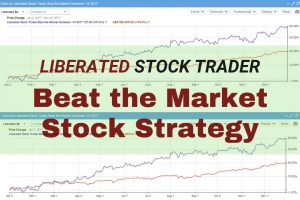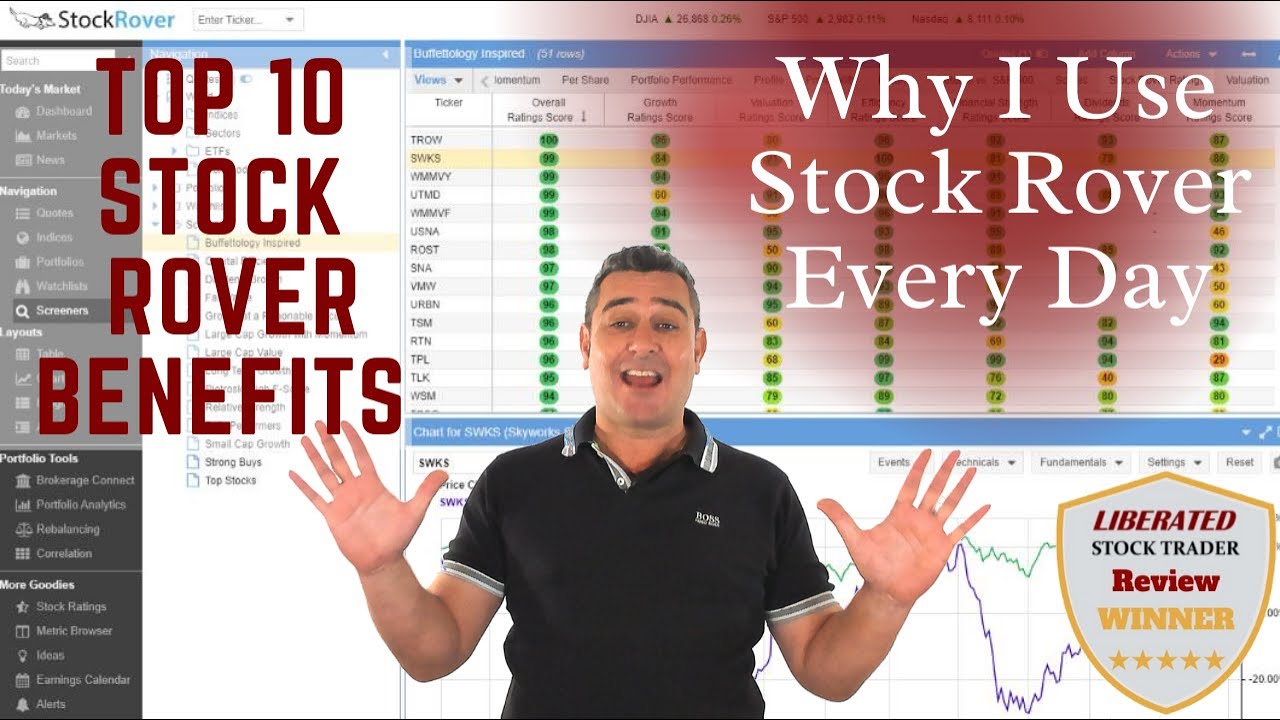To average up and down in stocks, buy more shares at a lower price when the stock price drops (averaging down) or fewer shares at higher prices when it rises (averaging up).
The averaging technique capitalizes on market movements with limited risk by lowering the cost basis and potentially increasing returns over time.
Averaging up and down should not be done blindly.
It requires careful analysis and understanding of the company’s fundamentals and market conditions.
What is averaging up on a stock?
Averaging up is a stock investing strategy involving buying more shares as the price increases so that when you’re ready to sell the stock, you’ll have purchased all the shares at an average cost lower than the current market price.
Averaging up on a stock is buying more shares of a stock you already own as the stock price increases.
For example, let’s say you own 100 shares of XYZ Corporation at $10 per share. Your total investment in the company is $1,000.
If the share price increases to $15, you might buy another 100 shares. Now, you own 200 shares, but your total investment is $2,500.
The average cost per share is now $12.50 ($2,500 divided by 200), which is higher than your original cost of $10 per share but lower than the current market price of $15.
Our original trading research is powered by TrendSpider. As a certified market analyst, I use its state-of-the-art AI automation to recognize and test chart patterns and indicators for reliability and profitability.
✔ AI-Powered Automated Chart Analysis: Turns data into tradable insights.
✔ Point-and-Click Backtesting: Tests any indicator, pattern, or strategy in seconds.
✔ Never Miss an Opportunity: Turn backtested strategies into auto-trading bots.
Don't guess if your trading strategy works; know it with TrendSpider.
Averaging up can be a good way to lower your overall risk if you believe in a company’s long-term prospects.
Of course, averaging up also has its risks. If the stock falls, you could end up losing money.
Averaging up is often used by investors following a dollar-cost averaging strategy. With this approach, you make regular investments in stock, regardless of the share price.
Over time, as the share price fluctuates, your average cost per share will become lower and lower.
When should you average up on stocks?
You should average up on stocks if you are confident that the stock price will continue to rise due to good business conditions or positive investor sentiment. You should perform deep research on the stock to understand if cash flow and earnings will continue to increase in the coming years.
Is averaging up risky?
Averaging up can be risky if the stock price does not perform as expected. You could buy at a higher cost than the rest of the market and lose money.
If you sell the stocks before their price drops below your average purchase price, you should make a profit.
How to Beat the Stock Market With Stock Rover

I love Stock Rover so much that I spent 2 years creating a growth stock investing strategy that has outperformed the S&P 500 by 102% over the last eight years. I used Stock Rover's excellent backtesting, screening, and historical database to achieve this.
This Liberated Stock Trader Beat the Market Strategy (LST BTM) is built exclusively for Stock Rover Premium Plus subscribers.
What is averaging down on stocks?
Averaging down is when an investor buys additional shares of a stock at increasingly lower prices. This strategy works best when the market conditions are temporary and expected to improve in the near future. Since it allows for cost-averaging, it reduces an investor’s overall average purchase price and can thus limit losses if the stock price eventually recovers.
Averaging up vs. averaging down on stocks
There are two main ways to average out your costs regarding stocks: averaging up and averaging down. Averaging up means buying additional shares of a stock you already own when the price increases, while averaging down means buying more shares of a stock you already own when the price decreases.
There are pros and cons to both methods. Averaging up can help you lower your overall cost basis in a stock, which is the price you paid for the shares minus any dividends or capital gains received. This can be beneficial if the stock’s price eventually rebounds, as you will have less money invested at the higher price.
However, averaging up also has its risks. If the stock’s price falls, you could pay an even higher average price for your shares. And if the stock is volatile, averaging up can lead to emotional decision-making as you try to time the market.
On the other hand, averaging down can help you boost your overall returns if the stock’s price decreases. This is because you will have a lower cost basis in the stock and will thus be able to sell your shares at a higher profit if the stock price rebounds. However, like averaging up, averaging down also comes with its risks.
If the stock’s price keeps falling after you buy more shares, you could lose money on the investment. And if the stock is volatile, averaging down can lead to you buying shares at an emotional low, which could mean paying too much for the stock.
Is averaging down risky?
Yes, averaging down can be risky if the stock price keeps falling because you will always be chasing the trade’s profit and running a loss. Averaging up is a more effective strategy.
It is important to invest only in stocks with strong fundamentals and have a well-thought-out plan for when to buy and sell them.
Investing In Stocks Can Be Complicated, Stock Rover Makes It Easy.
Stock Rover is our #1 rated stock investing tool for:
★ Growth Investing - With industry Leading Research Reports ★
★ Value Investing - Find Value Stocks Using Warren Buffett's Strategies ★
★ Income Investing - Harvest Safe Regular Dividends from Stocks ★

"I have been researching and investing in stocks for 20 years! I now manage all my stock investments using Stock Rover." Barry D. Moore - Founder: LiberatedStockTrader.com
Averaging up and down vs. dollar cost averaging
Averaging up involves buying fewer shares as prices rise and averaging down more shares as prices fall. In contrast, dollar-cost averaging involves making a regular stock purchase in a fixed dollar amount, regardless of the direct movement.
Averaging up or down is when you buy stocks more as the share price increases or decreases. Each purchase averages out the overall price you have paid per share, dampening the effects of significant price fluctuations.
Dollar-cost averaging (DCA) is a related concept but works slightly differently. It uses a consistent amount for each purchase rather than continually adjusting the number of shares purchased. This strategy spreads out your risk over time and ensures you are buying at an average price that considers initial highs or lows. This helps mitigate the effects of market volatility and ensures you have a more diversified portfolio.
Dollar Cost Averaging (DCA) Examples & Strategy For Investors
All long-term investors use averaging and DCA.
Investors who pay a regular amount into an IRA or 401K use the concept of dollar-cost averaging and averaging up and down. Their fixed payment is usually monthly or quarterly, and as the asset price rises and falls, it will average out to a more desirable amount than if you had invested everything at once when the price was high.
The cost of buying shares over multiple buys instead of investing one lump sum at once means you will be buying more shares with your subsequent investments than if you had invested everything all at once when the price was high.
Summary
In summary, investors who want to buy assets can use dollar-cost averaging and averaging up and down. The idea is to pay a fixed amount into an IRA or 401K regularly, such as monthly or quarterly.
Doing this will result in buying more shares over multiple investments instead of investing one lump sum when the price is high. This helps mitigate market volatility and ensure a diversified portfolio. In addition, by averaging up and down, investors can take advantage of short-term fluctuations in the market to increase or decrease their holdings.
FAQ
What is the best software for dollar-cost averaging stocks?
Stock Rover is the best software for tracking and reporting on DCA. According to our testing, it has the most complete set of investing, research, and screening features. Finviz and Portfolio 123 are also worth trying.
What is averaging up in stocks?
Averaging up is a strategy where an investor purchases additional shares of a stock they already own at a higher price. This strategy can be effective when a stock is on an upward trend, as it can increase the investor's overall profit when the stock's price continues to rise.
What is averaging down in stocks?
Averaging down is an investment strategy that involves buying more shares of a stock when its price drops. This decreases the average price you've paid per share, potentially leading to higher profits if the stock's price rebounds.
When should I average up?
It's best to average up when you believe a stock's price will continue to rise. It's essential to do thorough research and have a solid understanding of the company's fundamentals before deciding to average up.
How can I track my average cost per share?
Investing tools such as Stock Rover can automatically track your average cost per share. It is designed to connect to your broker and perform portfolio analytics. Stock Rover tracks your average cost per share and suggests optimal ways to rebalance your portfolio.
When should I average down?
Averaging down can be a good strategy if you believe the stock's price drop is temporary and it will rebound. Ensuring the company has strong financials and is not in long-term decline is crucial.
Is averaging down a good strategy?
While averaging down can reduce your average cost per share and potentially lead to higher profits, it's not without risk. If the stock continues to decline, you could incur larger losses.
Is averaging up a good strategy?
Averaging up can be a good strategy if the stock's price rises. However, it increases your average cost per share, which could lead to smaller profits or larger losses if the stock's price drops.
Does averaging up increase risk?
Yes, averaging up does increase risk. This is because it raises the average cost per share, meaning you need the stock's price to rise even higher to make a profit.
What are the benefits of averaging down?
Averaging down reduces your average cost per share, potentially increasing your profits if the stock's price rebounds. It can also provide an opportunity to acquire more shares at a lower price.
What are the risks of averaging down?
The main risk of averaging down is that the investor could incur larger losses if the stock's price continues to decline.
Can I average up and down in any stock?
Yes, you can average up or down in any stock. However, it's essential to thoroughly research the stock and clearly understand your investment goals before making this decision.
How does averaging up or down affect my portfolio balance?
Averaging up or down can impact your portfolio balance by altering your average cost per share and potentially affecting your overall returns.
